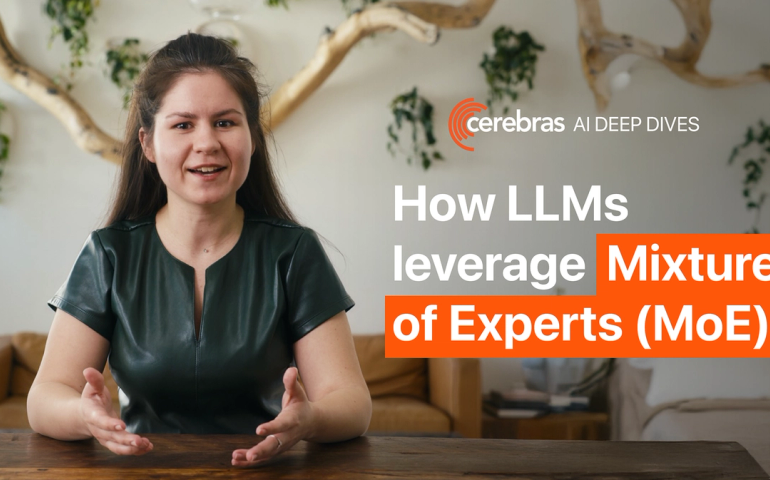MoE Fundamentals | Router Wars | Debugging Dead MoE Models | MoE at Scale | MoE Math Demystified
Why Choose MoE
Here's a counterintuitive fact: The most powerful language models today use less than 10% of their parameters for any given token (Yang et al., 2025, DeepSeek-AI et al., 2024). This isn't a bug - it's the feature that makes trillion-parameter models possible.
Why does this matter? We've hit a scaling wall. The progression from GPT-3's parameter scaling (Brown et al., 2020) to Chinchilla's compute-optimal ratios (Hoffmann et al., 2022) drove AI training compute up by a factor of 10^21 since AlexNet (Krizhevsky et al., 2012). But we can't just keep making models bigger forever - as we increase parameters, we need to proportionally increase compute. Eventually it becomes prohibitively expensive to train these models and impossible to sustain.
Mixture-of-Experts (MoE) is the path forward. The key mechanism is conditional activation of parameters. While dense transformers activate all parameters for every token (often multiplying many weights by zero activations (Mirzadeh et al., 2023)), MoE models selectively route tokens to a subset of parameters, which allows us to increase total parameter count without a proportional increase in computations per token.
Figure 1: Why MoE scales differently than dense models. Dense models compute efficiency hits diminishing returns when you add more parameters without increasing compute (Hoffmann et al., 2022). MoE breaks this rule: more experts gives you rapid logarithmic improvements for the same compute cost.
The results speak for themselves, Figure 1 shows that MoE models outperform Chinchilla-optimal dense models. Loss improvement (how much better the model performs at fixed compute) scales logarithmically with expert count. This scaling behavior represents something fundamentally different from what's possible with dense models - you simply cannot achieve comparable efficiency gains by making them larger.
To reach trillion-parameter models that are trainable and deployable, sparsity through MoE is becoming the only viable approach. Figure 1 shows that with just 32 experts (a modest number compared to recent models like DeepSeek's 256-expert architectures), you get either 5% better loss at the same compute budget, or 62% fewer FLOPs (Floating Point Operations per Second) to reach the same loss (3x faster training!).
But how does MoE achieve these gains? Let's understand exactly how they work.
The Fundamentals of MoE
Figure 2: The key MoE idea. Dense models send every token through the same feedforward block. MoE replaces it with specialized experts – your code tokens go to the coding experts, math to math experts. You still send same input to your network, but it only activates parts of it that are most relevant.
The MoE concept originated with Jacobs et al. 1991, was later adapted for LSTM networks by Shazeer et al., 2017 and eventually applied to transformer architectures (Vaswani et al., 2017), with the Switch Transformer (Fedus et al., 2021). This guide focuses specifically on MoE in the context of transformer architectures, which has become the dominant approach used in today's largest language models (Brown et al., 2020; Grattafiori et al., 2024; DeepSeek-AI et al., 2024).
The core insight is simple: different types of inputs benefit from different types of processing. Code tokens need different transformations than natural language tokens. Math expressions need different handling than creative writing. A model processing English text shouldn't need to activate the same transformations as when it's handling Russian or Arabic.
In a dense transformer, feedforward layers do the heavy lifting. They decide which neurons to activate for a given input token. This the place where specialization can have the biggest impact. With MoEs, instead of forcing everything through the same feedforward block, we create multiple copies of it – each copy becomes an expert network. A router then decides which expert should handle each token, as illustrated in Figure 2.
Now, how do we implement this? Here is what happens when a token hits an MoE layer:
Figure 3: Pseudocode for MoE layer implementation. With N=256 experts but only top_k=8 activated per token, you get 256x the model capacity for just 8x the compute cost – this is how you get efficiency gains.
Implementation in Figure 3 is just one way to do MoE routing - the approach from Shazeer et al., 2017 that is widely adopted today. In practice, you have options: swap softmax for other normalization functions (DeepSeek-AI et al., 2024; Anthony et al., 2024), replace top_k with top_p sampling (Huang et al., 2024), or even go full dense and use all experts for that particular layer.
The router component is critical - it’s what makes or breaks your MoE model. The scaling performance shown in Figure 1 is for a specific routing strategy, but your choice of routing can dramatically impact both performance and scaling behavior. In Router Wars: Which MoE Routing Strategy Actually Works, we will dive deep into which routing approaches work best in practice and how to choose the right one for your use case.
Citation
Questions? Find me at: https://soboleva-daria.github.io/
References
Anthony, Q., Tokpanov, Y., Glorioso, P., & Millidge, B. (2024). BlackMamba: Mixture of experts for state-space models. arXiv preprint arXiv:2402.01771. https://doi.org/10.48550/arXiv.2402.01771
Brown, T. B., Mann, B., Ryder, N., et al. (2020). Language models are few-shot learners. arXiv preprint arXiv:2005.14165. https://doi.org/10.48550/arXiv.2005.14165
DeepSeek-AI (2024). DeepSeek-V3 technical report. arXiv preprint arXiv:2412.19437. https://doi.org/10.48550/arXiv.2412.19437
Fedus, W., Zoph, B., & Shazeer, N. (2022). Switch transformers: Scaling to trillion parameter models with simple and efficient sparsity. Journal of Machine Learning Research, 23(120), 1-39.
Llama Team, AI @ Meta (2024). The Llama 3 herd of models. arXiv preprint arXiv:2407.21783. https://doi.org/10.48550/arXiv.2407.21783
Hoffmann, J., Borgeaud, S., Mensch, A., et al. (2022). Training compute-optimal large language models. arXiv preprint arXiv:2203.15556. https://doi.org/10.48550/arXiv.2203.15556
Huang, Q., An, Z., Zhuang, N., et al. (2024). Harder tasks need more experts: Dynamic routing in MoE models. arXiv preprint arXiv:2403.07652. https://doi.org/10.48550/arXiv.2403.07652
Jiang, A. Q., Sablayrolles, A., Roux, A., et al. (2024). Mixtral of experts. arXiv preprint arXiv:2401.04088. https://doi.org/10.48550/arXiv.2401.04088
Krizhevsky, A., Sutskever, I., & Hinton, G. E. (2012). ImageNet classification with deep convolutional neural networks. In Advances in Neural Information Processing Systems (Vol. 25, pp. 1097-1105). Curran Associates, Inc.
Mirzadeh, S. I., Alizadeh, K., Mehta, S., et al. (2023). ReLU strikes back: Exploiting activation sparsity in large language models. arXiv preprint arXiv:2310.04564. https://doi.org/10.48550/arXiv.2310.04564
Muennighoff, N., Soldaini, L., Groeneveld, D., et al. (2024). OLMoE: Open mixture-of-experts language models. arXiv preprint arXiv:2409.02060. https://doi.org/10.48550/arXiv.2409.02060
OpenAI (2023). GPT-4 technical report. arXiv preprint arXiv:2303.08774. https://doi.org/10.48550/arXiv.2303.08774
Shazeer, N., Mirhoseini, A., Maziarz, K., et al. (2017). Outrageously large neural networks: The sparsely-gated mixture-of-experts layer. arXiv preprint arXiv:1701.06538. https://doi.org/10.48550/arXiv.1701.06538
Gemini Team, Google (2024). Gemini 1.5: Unlocking multimodal understanding across millions of tokens of context. arXiv preprint arXiv:2403.05530. https://doi.org/10.48550/arXiv.2403.05530
Vaswani, A., Shazeer, N., Parmar, N., et al. (2017). Attention is all you need. arXiv preprint arXiv:1706.03762. https://doi.org/10.48550/arXiv.1706.03762
Qwen Team (2025). Qwen3 technical report. arXiv preprint arXiv:2505.09388. https://doi.org/10.48550/arXiv.2505.09388




